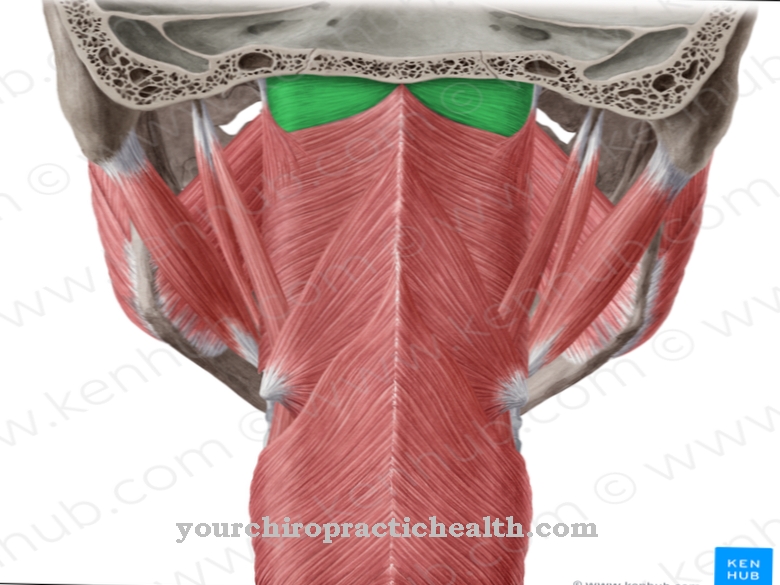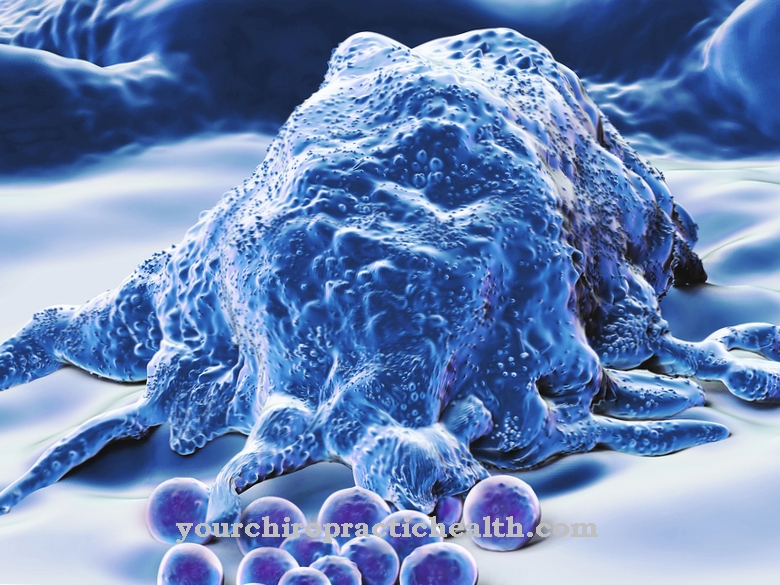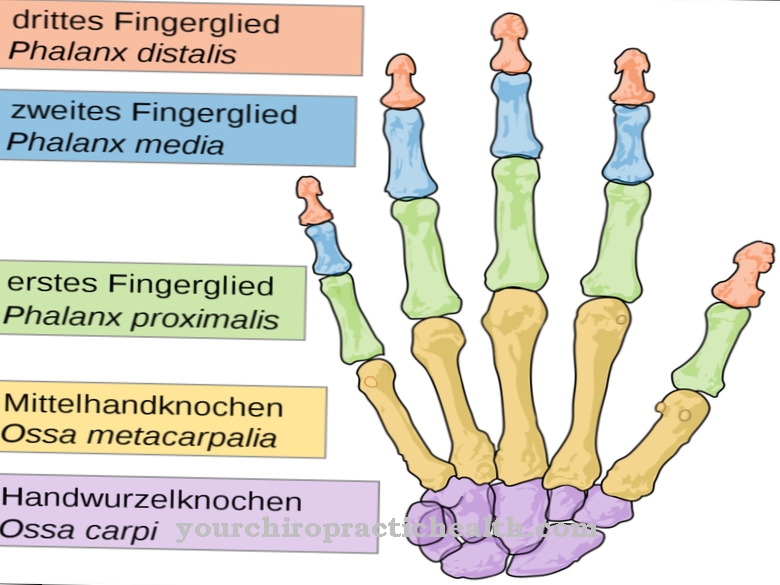Under the Acinar medicine understands that End of the gland and at the same time the functional unity of different organs. Acini are found in the lungs, liver, and pancreas, or salivary glands, for example. The tissue of the parotid acini in particular can be affected by degeneration or inflammation.
What is the acinar?
The secretory end piece of glands is called the acinar. Literally translated, the Latin expression means something like "grape" and in this case refers to the shape of the anatomical structure. The acinar is the functional component of every body gland, in which the production of the secretion takes place. In addition to the glandular end pieces, the functional units of body organs are also referred to as acinus.
Examples of this are the lungs, in whose fine tissue area the actual gas exchange takes place. The body's acini differ in texture depending on the morphology of the associated glandular tissue and the consistency of their secretions. The secretion mode also affects the anatomical shape of the end of the gland. The best known acini are those of the liver, pancreas, and salivary glands.
Anatomy & structure
Regardless of the type of gland and the consistency of the secretion, all acini have a duct around which epithelial cells are arranged. These cells are comparatively large and dense cells with a relatively narrow lumen. Their exact size and actual density depends on the gland. The lumen of the duct can also vary from gland to gland and depends on the consistency of the secretion.
As a rule, the more viscous the secretion, the larger the duct diameter. Most acini are surrounded by myoepithelial cells that have contractile filaments. The gland cells have a polar structure. The cell organelles for the formation of the secretion are arranged at the base. In addition, basal substances are taken up from the blood into the acinar. The acinar duct is apical. Mixed glands with seromucous secretion also have serous gland cells on the secreting acinar.
The histological section through this structure is known as the Ebner crescent. The pancreas has an unusual structure at the acinar. Cells of the gland reach into the lumen of the acinar and take part in the production of bicarbonate. These cells are also known as centroacinar cells.
Function & tasks
All acini in the human body are active as functional units of a particular organ. The production of the respective secretion takes place in the acinar of the glands. This secretion is usually hormones or other messenger substances, such as growth factors. The production of such substances and the release of the secretions from the respective glands fulfill vital tasks in the body.
The secretions of the glands stimulate or inhibit growth processes. The substances are just as relevant for the immune system and all other body functions, especially for the metabolism and the maintenance of a stable circulation. The acini of the organs differ from those of the glands in that they do not produce any secretion, or not exclusively. The acinar of the lungs is functionally relevant for gas exchange. From the terminal bronchiolus, the airways transform into so-called bronchioli respiratorii.
In this area of the lungs there are alveoli in the lung wall. The airways become noticeably smaller from here and transform into the ductus alveolares, which open into the sacculi alveolares. The acinar is this tissue including all alveoli and airways of a single bronchiolus terminalis. The gas exchange occurs from the bronchioli respiratorii. In this context, medicine speaks of gas exchange in the acinar. Since the epithelia of this structure produce the surfactant, the pulmonary acne also has glandular functions as far as possible.
Diseases
In all acini of the human body, the cells can degenerate under certain circumstances and thus give rise to a malignant cancer. In this context, we are also talking about acinar cell carcinoma. The parotid gland in particular is affected by this phenomenon. The degree of malignancy in these tumors is comparatively low, so that the prognosis is relatively favorable.
In acinar cell carcinoma, secretion-producing cells form anew. In the case of such a tumor in the parotid gland, changes in taste and facial paralysis usually occur because one of the facial nerves runs directly through the parotid ducts. Pain is also a common symptom of the appearance. Metastases are rare in acinar cell carcinoma of all types, but may have a negative impact on the prognosis. Acinar cell carcinomas of the salivary glands in particular are easy to treat and have a survival rate of more than 80 percent after ten years.
Unfortunately, this type of cancer often has recurrences. Those affected must therefore appear for life-long cancer screening examinations in order to recognize and treat possible recurrences at an early stage. In addition to degeneration, the acinar tissue is often also affected by inflammation. Acinar inflammation occurs primarily in the pancreas and can cause lasting damage to cells. Inflammation in other tissues of the body may also spread to the acinar, or the opposite phenomenon may take place. In order to avoid permanent damage, the painful symptoms are treated with anti-inflammatory drugs as soon as possible.



























